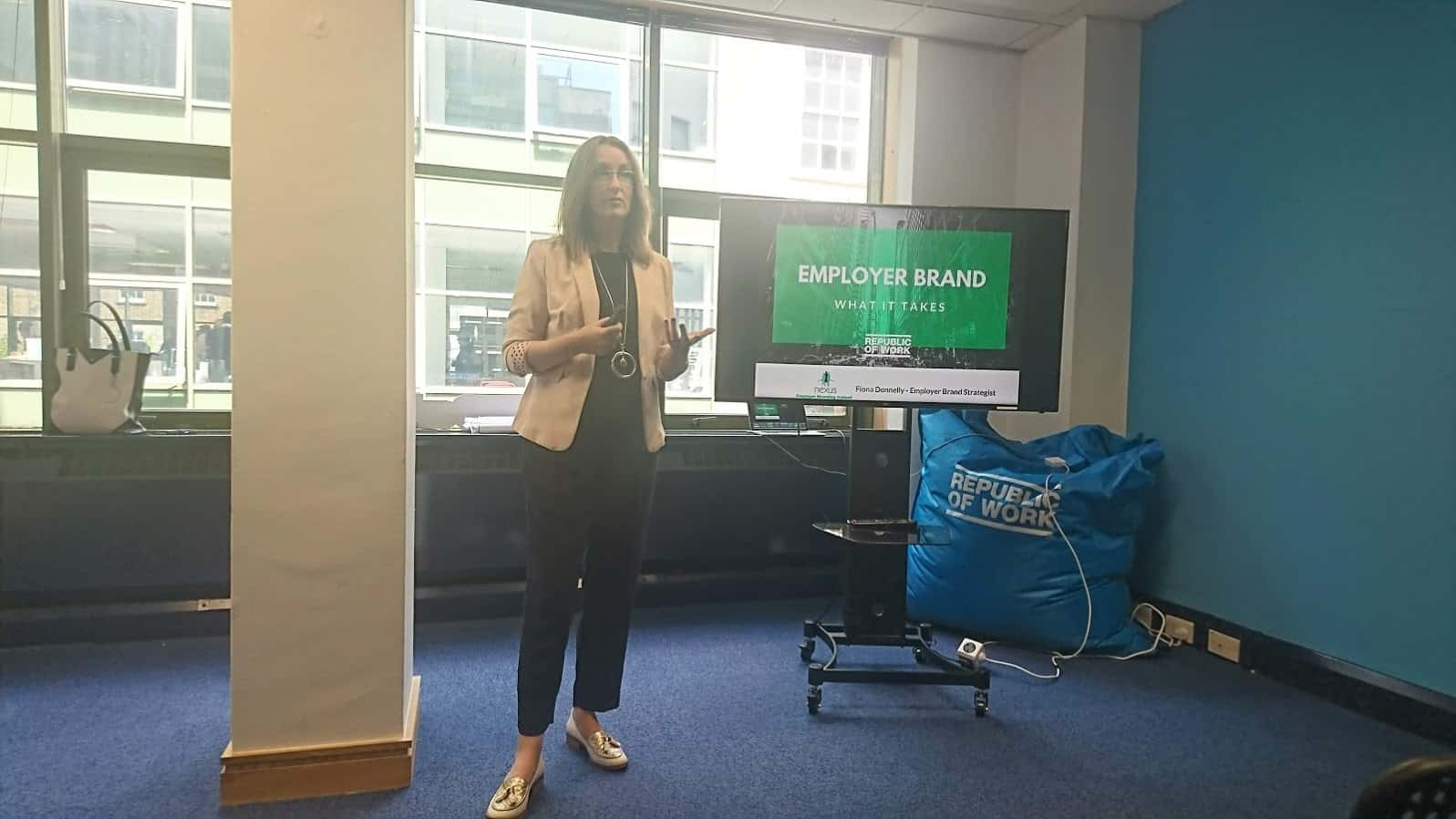culture-branding
How to improve your employer brand


Siobhan Hasner
HireHive

Siobhan Hasner
HireHive


Siobhan Hasner
HireHive

Siobhan Hasner
HireHive
At HireHive the topic of ‘Employer Branding’ comes up a lot! We get asked by customers how they can improve their employer brand and we develop our product with our customer's employer brand in mind. But what exactly is ‘Employer Brand’?
In short Employer Branding is the reputation of a company/employer. Minchington describes your employer brand as "the image of your organisation as a 'great place to work' in the mind of current employees and key stakeholders in the external market (active and passive candidates, clients, customers and other key stakeholders). Another way of looking at it is ‘it’s what your people say about the company when the boss isn’t listening’.
Employer Branding is nothing new. Every brand has one but it may not necessarily be the one you want. So then if you have one any way you might as well try to shape it to be the best that it can be. A strong employer brand helps businesses compete for the best talent and establish credibility. But how exactly do you do that and where do you start?
“Research from the Harvard Business Review shows that CEOs and HR leaders expect to make an increased investment into their employer brand over the coming years. By 2020, it’s likely to be a key part of most recruiting teams’ long-term strategy.”
We recently attended an event led by Fiona Donnelly from Nexus Consulting. The event got us thinking and discussing Employer Branding in more detail.
[caption id="attachment_13497" align="alignnone" width="500"] Employer Brand Event[/caption]
Employer Brand Event[/caption]
Fiona spoke about the importance of your employer brand throughout the entire pipeline - from attracting candidates to engaging them and retaining them at your organisation.
Employer branding has always been a key topic for us and for our customers. Your careers page and interaction with candidates is a huge factor in building and maintaining your employer brand. We decided to dive a little deeper and look at how exactly you can improve your employer brand.
Find out where people are talking about your brand. What are they saying, are there platforms (like Glassdoor) where your organisation is being reviewed? Combine all the information that you can find, as this is your starting point.
Take a look at all the information you have gathered. What are people saying?
You might see one of three things:
All three are a good starting point - we all have to start somewhere!
If people are already saying good things about your organisation that’s great! From this, it’s important to find out what the key points that people are mentioning are. Is it work flexibility? Office culture? The office dog? These are the points that you then need to focus on as important to your employees and should be the basis for your company message.
If employees are saying negative things about the organisation it’s really important to listen and figure out whether these are things that can be addressed. Is it something that needs to be raised with management? Sometimes small changes make a big difference.
The final outcome is that there is complete radio silence when it comes to your brand and then you have a clean slate to work from. Find out what your employees value and encourage employees to share their reviews of the company online.
What are you all about as a company? What is your Employer Value Proposition (EVP)? Your message needs to be authentic and from that, your tone of voice will also develop. It’s useful to have this as a short paragraph in your employee handbook or intraweb to make sure this filters across the organisation.
Everyone has a part to play when it comes to employer branding. The easiest way to ensure you get buy-in from other stakeholders and employees is if you have a clear roadmap in place that outlines actions that you are going to take to improve the company brand. This should also highlight where you are now and where you want to get to with your employer brand. This is by no means a once off task and the roadmap may evolve over time.
Recruitment strategy is a key area to look at when reviewing your employer brand (that’s where we come in!) but looking after existing employees and listening to what they want is just as important. There are lots of ways to do this. The best starting point is using a survey to get a sense of how your employees feel about your organisation. At HireHive a flexible work culture was one of the key things that people liked about working here so we focused on making that really easy. Now people can work from almost anywhere and often do. It's not unusual for our morning calls to have people dialling in from a remote valley in France or from a cafe on the coast of Italy.
It is also inevitable that some good people may choose to leave your organisation for one reason or another over time. If and when this happens there is often no reason why these people can't still be brand advocates for your organisation and just increase your network - provided there was no disciplinary action involved. You might even find that they return at some point. This is something that is also key at HireHive. We have lost some great people over the years for various reasons but the difference was that the leaving process was amicable which means that a lot of the employees still stay in touch and socialise together. This has resulted in an amazing referral network as well as some employees continuing to work freelance with the company or even returning after travelling or working somewhere else.
Technology can really help you improve your employer brand by providing better communication channels and improving the overall candidate experience. Software like HireHive allows you to create seamless and on-brand candidate experiences right through the recruitment process. Technology can help streamline candidate attraction, engagement, interview processes and feedback making it easier to build and maintain your employer brand throughout all processes. Also don't be afraid to try out a few different platforms before you find the right one. It may seem daunting but for example, we tested out numerous online chat platforms before finally settling on Intercom which meant that in the greater scheme of things we saved time and money despite the time it took to find the right option for us.
Every organisation has a story. People are naturally drawn to these as they represent the people of the company rather than a faceless corporation. You can use landing pages, your 'About Us' page and communication with candidates throughout the hiring process to share your story.
Know where your people are at. Is it LinkedIn, Facebook, Twitter, Pinterest or Instagram? Find out where your ideal hires are and engage with people via those channels. This might involve sharing your content on this channel or answering questions that are asked. McDonald's do this using Snapchat where they target their junior recruits with targeted ads while HootSuite uses Instagram to give an insight into their company culture.
[caption id="attachment_13498" align="alignnone" width="500"] HootSuite Employer Brand[/caption]
HootSuite Employer Brand[/caption]
Sign up for our monthly newsletter to receive the latest news, insights, and exclusive resources.

“HireHive makes the team a lot more productive. We’d be lost without it. Team Leaders can do it all themselves if needed or jump in at the right time and know exactly where everything is and what’s happening.”

Hilary Dempsey Head of HR at Life Credit union